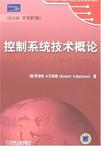控制系统技术概论
出版时间:2006-4 出版社:机械工业出版社 作者:贝特森 页数:704
Tag标签:无
内容概要
《控制系统技术概论(英文版·原书第7版)》的作者有长达10年的控制工程技术工作经历,加之非常明确的编著目的——培养学生掌握闭环控制系统构建、控制器设计、系统现场调试等方面的技术与方法,使本书具有理论联系实际、工程背景强的基本特色和鲜明特点。 1.总体结构独特,突出工程实践; 全书正文由五部分组成,思路开阔,内容由浅入深,层次分明,系统性强。第一部分“引论”共四章,占全书除附录外的23.3%篇幅,这在其他同类书籍中较为少见,有利于初学者对自动控制的概念、闭环系统的基本组成与常用部件、系统类型、控制的目的与评价标准等有一个全面、清晰的认识。 2.内容融合多门课程,结合技术标准; 本书以闭环控制系统的分析、设计为主线,涉及的被控对象包括电系统、气动系统、液压系统、热力系统、机械系统等,将自动控制理论、自动检测技术、自动检测技术、电机气动基础、电力电子技术、过程控制系统、运动控制系统、电气控制与PLC等多门课程融合在一起,形成一个有机的整体。 3.论述深度把握合理,采用启发性方式叙述; 书中每章前都列出该章学习目的和需要重点掌握的内容,便于读者目标明确地学习,并自我衡量是否达到本章学习要求。全书的16章中有14章都引论。引论的内容起到如下几个作用:①概括全章的内容;②承上启下,提出问题,以便在此后的各节中逐一解决;③阐明重要要领。 4.插图强调联系实际,习题侧重工程训练。 全书的插图经过精心设计,直观、清晰,有助于概念的理解。书中有相当数量的工程图,如气动控制阀的机械结构图、工业传送带控制系统电气控制原理图等等,体现了与工程紧密联系的特点。一插图配有较大篇幅的文明说明,一方面方便了读者,另一一方面使正文的文字简练。
作者简介
作者:(美)罗伯特 N.贝特森
书籍目录
Preface VIIPART0NE INTRODUCTIOICHAPTER I Basic Concepts and Terminology 1.1 Introduction 1.2 Block Diagrams and Transfer Functions 1.3 Open-Loop Control 1.4 Closed-Loop Control: Feedback 1.5 Control System Drawings 1.6 Nonlinearities 1.7 Benefits of Automatic Control 1.8 Load Changes 1.9 Damping and Instability 1.11 Criteria of Good Control 1.12 Block Diagram Simplification CHAPTER 2 Types of Control 2.1 Introduction 2.2 Analog and Digital Control 2.3 Regulator and Follow-Up Systems 2.4 Process Control 2.5 Servomechanisms 2.6 Sequential Control 2.7 Numerical Control 2.8 Robotics Contents 2.9 The Evolution of Control Systems 2.10 Examples of Control SystemsCHAPTER 3 The Common Elements of System Components 3.1 Introduction 3.2 Electrical Elements 3.3 Liquid Flow Elements 3.4 Gas Flow Elements 3.5 Thermal Elements 3.6 Mechanical ElementsCHAPTER 4 Laplace Transforms and Transfer Functions 4.1 Introduction 4.2 Input/Output Relationships 4.3 Laplace Transforms 4.4 Inverse Laplace Transforms 4.5 Transfer Functions 4.6 Initial and Final Value Theorems 4.7 Frequency Response: Bode PlotsPARTTW0 MEASUREMENTCHAPTER 5 Measuring Instrument Characteristics 5.1 Introduction 5.2 Statistics 5.3 Operating Characteristics 5.4 Static Characteristics 5.5 Dynamic Characteristics 5.6 Selection CriteriaCHAPTER 6 Signal Conditioning 6.1 Introduction 6.2 The Operational Amplifier 6,3 Op-Amp Circuits 6.4 Analog Signal Conditioning 6.5 Digital Signaling ConditioningCHAPTER 7 Position, Motion, and Force Sensors 7.1 Introduction 7.2 Position and Displacement MeasurementContents 7.3 Velocity Measurement 7.4 Acceleration Measurement 7.5 Force MeasurementCHAPTER 8 Process Variable Sensors 8.1 Temperature Measurement 8.2 Flow Rate Measurement 8.3 Pressure Measurement 8.4 Liquid Level MeasurementPARTTHREE MANIPULATKCHAPTER 9 Switches, Actuators, Valves, and Heaters 9.1 Mechanical Switching Components 9.2 Solid-State Components 9.3 Hydraulic and Pneumatic Valves and Actuators 9.4 Control Valves 9.5 Electric Heating ElementsCHAPTER I0 Electric Motors 10.1 Introduction 10.2 AC Motors 10.3 DC Motors 10.4 Stepping Motors 10.5 AC Adjustable-Speed Drives 10.6 DC Motor Amplifiers and DrivesPARTFOUR CONTRCHAPTER 11 Control of Discrete Processes 11.1 Introduction 11.2 Time-Driven Sequential Processes 11.3 Event-Driven Sequential Processes 11.4 Time/Event-Driven Sequential ProcessesCHAPTER 12 Programmable Logic Controllers 12.1 Introduction 12.2 PLC HardwarevContents 12.3 PLC Programming and Operation 12.4 PLC Programming FunctionsCHAPTER 13 Control of Continuous Processes 13.1 Introduction 13.2 Modes of Control 13.3 Electronic Analog Controllers 13.4 Digital Controllers 13.5 Advanced Control 13.6 Fuzzy Logic ControllersPARTFIVE ANALYSIS AND DESIGNCHAPTER 14 Process Characteristics 14.1 Introduction 14.2 The Integral or Ramp Process 14.3 The First-Order Lag Process 14.4 The Second-Order Lag Process 14.5 The Dead-Time Process 14.6 The First-Order Lag Plus Dead-Time ProcessCHAPTER 15 Methods of Analysis 15.1 Introduction 15.2 Overall Bode Diagram of Several Components 15.3 Open-Loop Bode Diagrams 15.4 Closed-Loop Bode Diagrams 15.5 Error Ratio and Deviation Ratio 15.6 Computer-Aided Bode Plots 15.7 Stability 15.8 Gain and Phase Margin 15.9 Nyquist Stability Criterion 15.10 Root Locus CHAPTER 16 Controller Design 16.1 Introduction 16.2 The Ultimate Cycle Method 16.3 The Process Reaction Method 16.4 Self-Tuning Adaptive Controllers 16.5 Computer-Aided PID Controller Design 16.6 Example Design of a Three-Loop Control System 16.7 Control System CompensationContentsAPPENDIX A Properties at Materials Properties of Solids Melting Point and Latent Heat of Fusion Properties of Liquids Properties of Gases Standard Atmospheric ConditionsAPPENDIX B Units and Conversion Systems of Units Conversion FactorsAPPENDIX C Binary Codes Powers of 2 Octal and Binary Equivalents Decimal, Hexadecimal, and Binary Equivalents One's and Two's Complements The Gray Code Binary Codes for Decimal Digits Seven-Bit ASCII Code APPENDIX D Instrumentation Symbols and Identification Purpose Scope Definition Outline of the Identification System APPENDIX E Complex Numbers Introduction Rectangular and Polar Forms of Complex Numbers Conversion of Complex Numbers Graphical Representation of Complex Numbers Addition and Subtraction of Complex Numbers Multiplication and Division of Complex Numbers Integer Power of a Complex Number Roots of a Complex Number APPENDIX F Communications Communication Interfaces Local Area Networks Communication Protocols
图书封面
图书标签Tags
无
评论、评分、阅读与下载
